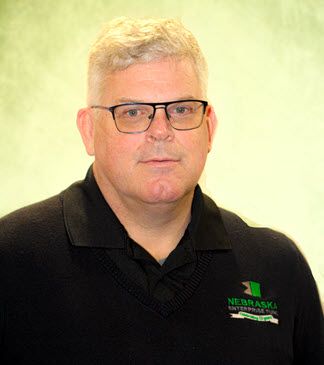Jim Reiff completed the Federal Reserve’s Community Development Financial Institution (CDFI) Survey this summer. The survey results show that his experiences mirror what other CDFIs across the country have faced. Reiff is the president and CEO of the External LinkNebraska Enterprise Fund (NEF), which covers Nebraska and southwest Iowa. NEF is a CDFI that provides funding and training for micro-businesses, including the self-employed, start-ups, home-based and other small businesses that are not yet bankable.

Jim Reiff is president and CEO of the Nebraska Enterprise Fund.
NEF experiences echo those of other CDFI Survey respondents
According to Reiff, NEF has seen the demand for their lending products continue to grow—adjusting their interest rates slightly as their cost of funds have gone up, and with clients coming to them with larger loan requests. The average from the last five years increased from approximately $42,000 to $60,000 now.
The pipeline for future loans is not the issue, says Reiff. Rather, it’s the capacity of the organization to manage the loans and the processing side of the CDFI. Though the pipeline is steady, staff are also seeing more clients with troubled financials and too much debt, including student loans that are now in repayment, and a lack of collateral. These factors require more technical assistance from NEF’s staff to process and approve loans.
Reiff cites federal funding as very helpful, including the $15 million from the External LinkUSDA-Rural Development Meat and Poultry Intermediary Lending Program NEF received. The funds help NEF expand independent meat and poultry processing capacity to give farmers more market options, increase competition and encourage fairer prices. In addition, the External LinkState Small Business Credit Initiative (SSBCI) funds entrepreneurship and small business growth. Both programs allow NEF and other CDFIs the opportunity to make more and larger loans to small businesses and partner with financial institutions.
CDFIs are having a major economic impact in rural and urban communities across the country for every impact measure – job retention, job creation, and revenue growth – while stabilizing the start-up business space, according to Reiff.
Key findings from the 2023 CDFI Survey
The 2023 survey, which was fielded from April 24 to June 2 and gathered information from 453 respondents (nearly a third of the industry), External Linkfinds CDFIs again facing increased demand but in a different economic environment.
- Demand for CDFI products remains strong. Three out of four CDFIs saw an increase in demand over the past year, and a similar percentage expect demand to continue increasing into next year.
- CDFIs largely met demand, but for some, their ability has been limited. Over the past year, 40% of CDFIs reported fully meeting increased or steady demand, 42% mostly met demand, and 18% partially met demand. Encouragingly, many CDFIs were optimistic about meeting increased demand in the coming year.
- The biggest challenges to fully meeting demand varied across CDFIs. Loan funds frequently cited the increasing cost of lending capital as a challenge, as well as restrictive and insufficient operational funding. Credit unions were more likely to cite hiring and retention challenges, along with challenges related to borrower qualifications and technology.
- CDFIs have continued to innovate to address these and other challenges. Examples are wide-ranging and include tapping into recent federal funding programs to expand loan products, hiring specialized staff to meet operational needs, integrating online platforms with back-office technology, and taking nontraditional approaches to underwriting.
- Capturing outcome measures to demonstrate the impact of these innovations remains elusive for many CDFIs. Nearly all CDFIs are capturing output metrics closest to their operations, like client counts and the dollar value of financial products. But various impediments constrain CDFIs from measuring outcomes such as the financial performance of clients or the number and quality of jobs created.
The Federal Reserve will continue to provide updates and new information that’s helpful to grow and strengthen the small business sector and our economy, an economy that works for everyone.
Find the full report at External Link2023 CDFI Survey Key Findings | Federal Reserve (fedcommunities.org)
Need information on the Community Reinvestment Act (CRA) Final Rule? Go to External LinkCRA OneSource - Federal Reserve Bank of Kansas City (kansascityfed.org) to learn more.
